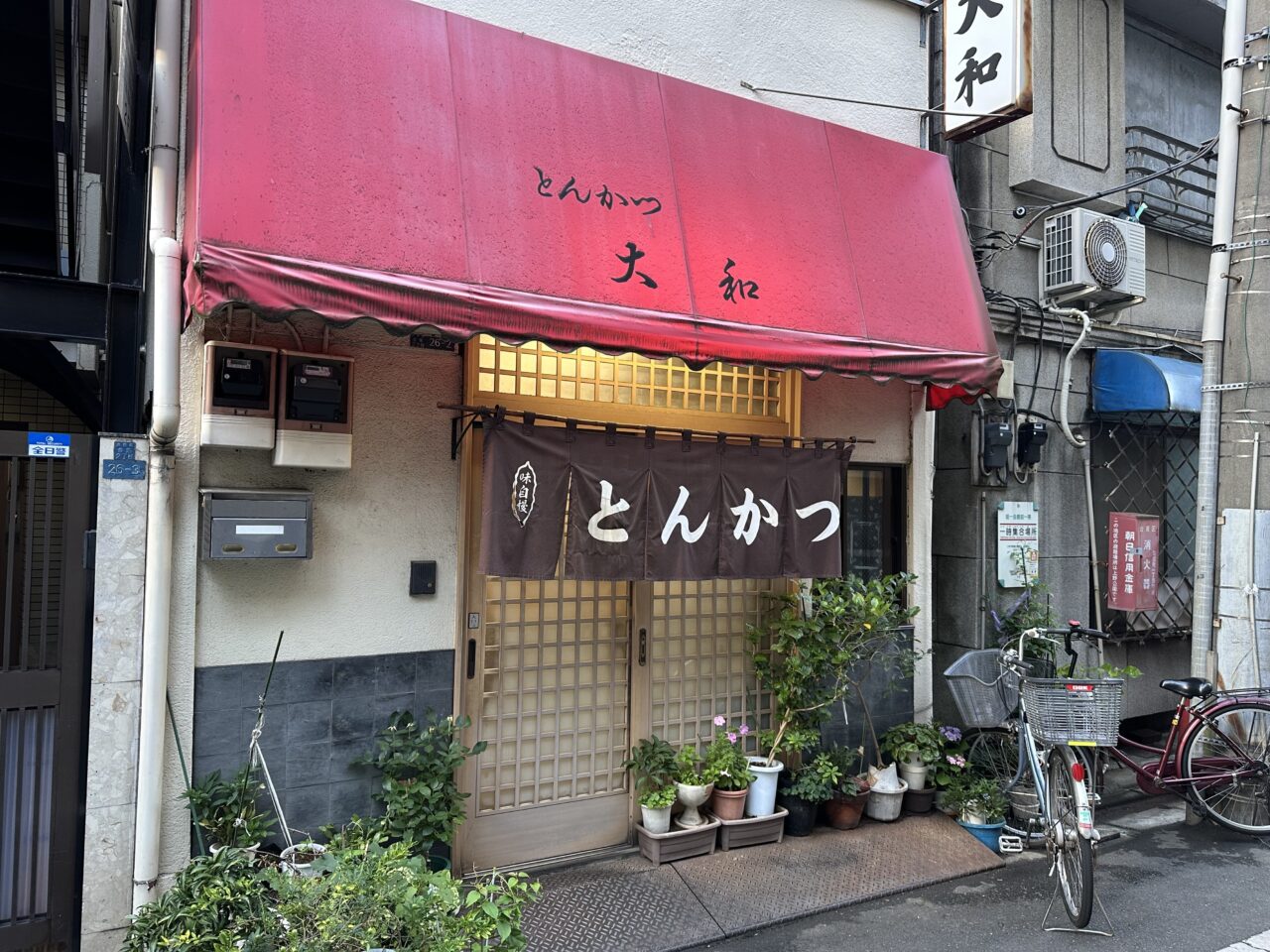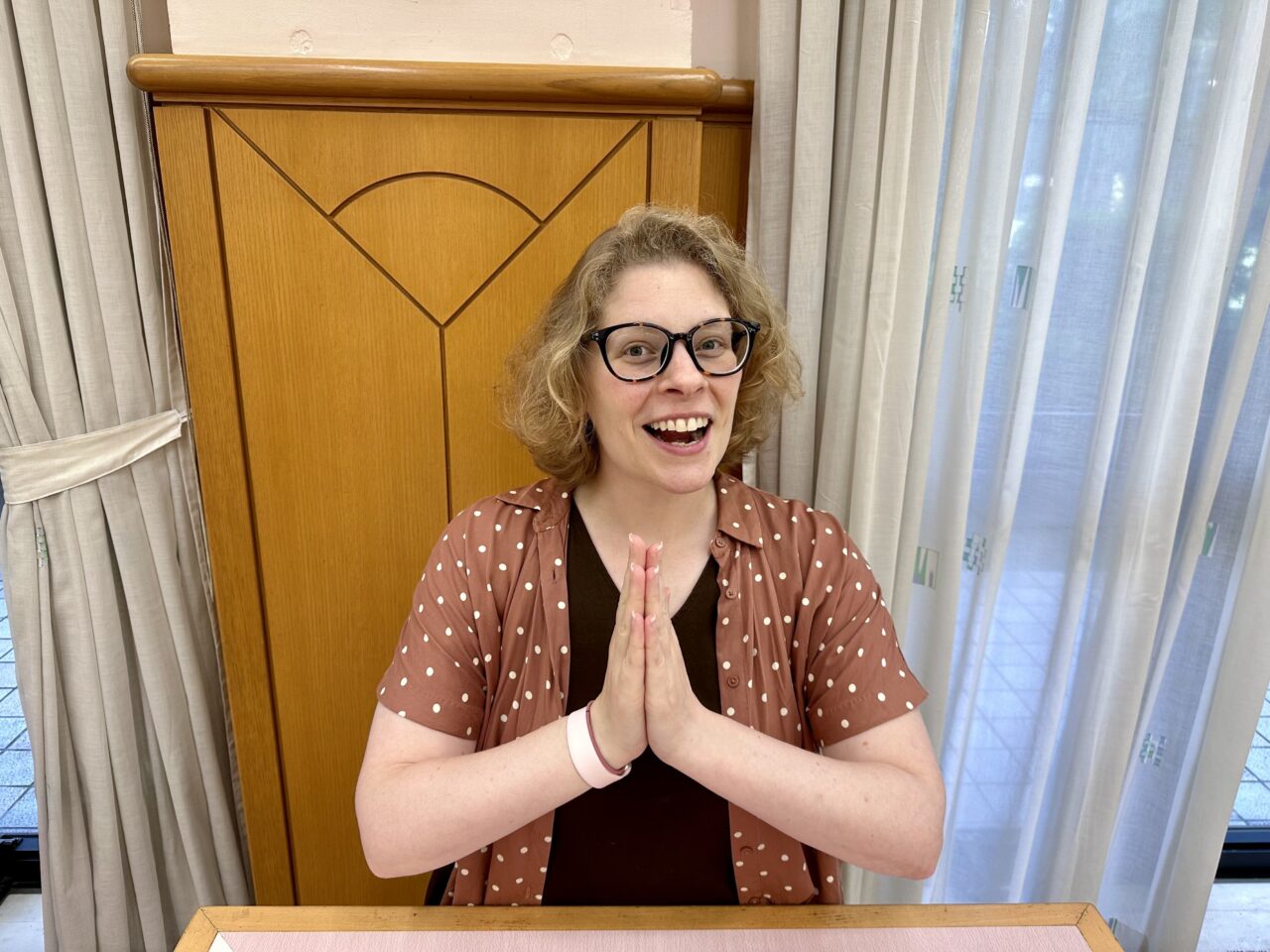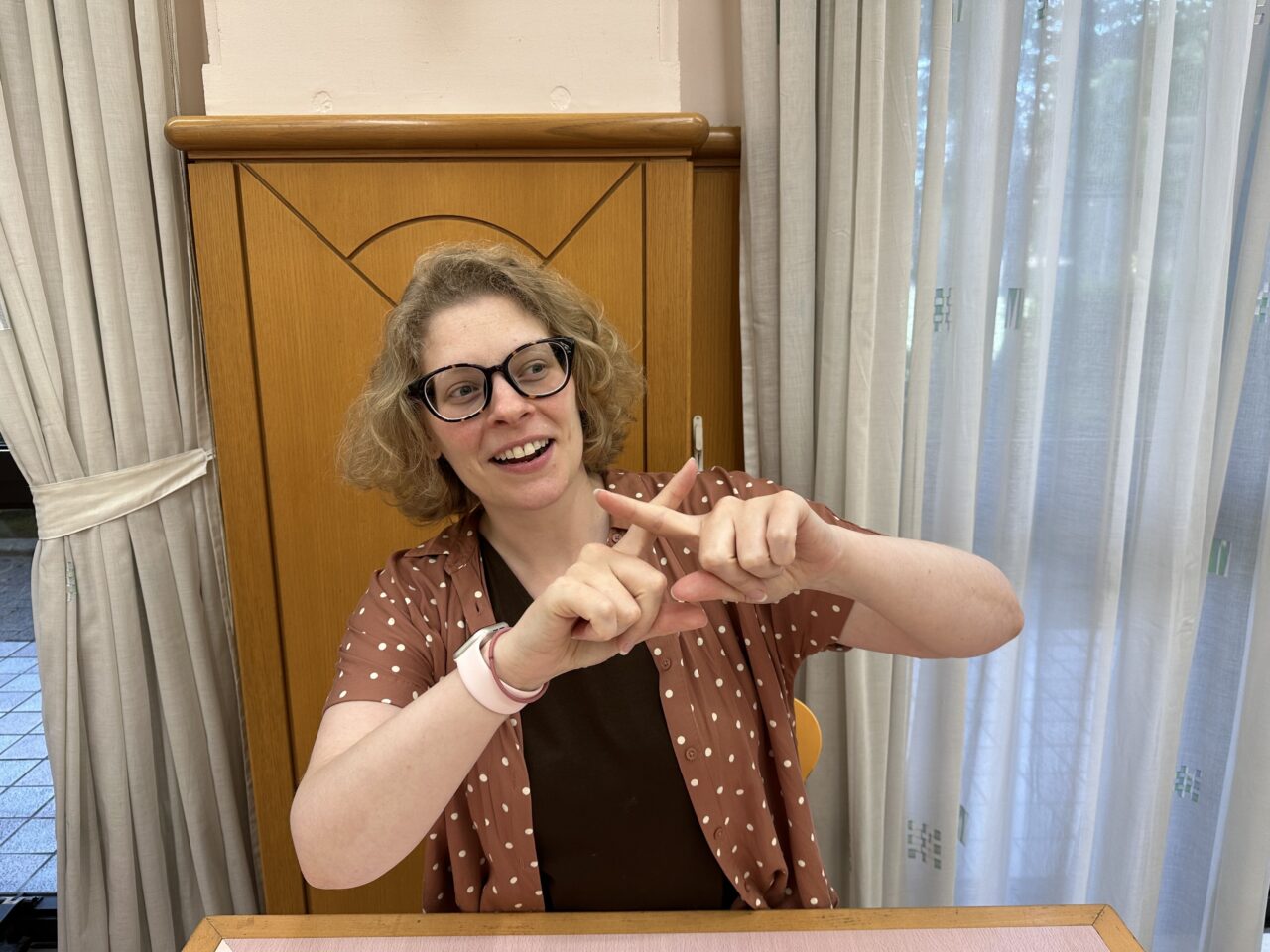The Only Japanese Restaurant Guide You’ll Ever Need, Part 1: Ordering and Policies


Written by
Name: Stephanie
Country of origin: USA
How long you’ve lived in Japan: 6 years
Where you live in Japan: Tokyo (and 1 year in Gunma)
Instagram
Your first time in a Japanese restaurant can have you feeling a whole range of emotions ranging from excited to intimidated. Well, there’s good reason to be excited, because your food is almost guaranteed to be scrumptious, so let’s see if we can eliminate any feelings of anxiety by learning some etiquette, common practices, and quirks of Japanese restaurants. Ready to dig in?
Entering the Restaurant: Curtains, Flags, and Signs
The first thing you might notice about a restaurant is the curtain outside the door. For a westerner, this could be confusing. Are they for privacy and therefore it’s closed? Quite the opposite—think of these curtains as Japan’s original open sign! Called noren (のれん), these curtains are your sign to come on in! Sometimes the restaurant has upright flags as well. You can also use these flags and curtains to know if the restaurant is open or closed. If you see them set down somewhere, if the door is glass and you can see them on the inside, or if the noren curtain is hung backwards (seams and fabric backside visible), the restaurant is closed.
Many restaurants these days don’t display noren or flags, they have open/closed signs instead. If they’re in Japanese, “open” is “営業中” (eigyō-chū, literally “doing business”). “Closed” has two variations, usually “準備中” or “支度中” (“junbi-chū” or “shitaku-chū,” both different ways to say “getting ready”). If they’re English signs, it’ll be the classic “Open/Closed” sign, but most restaurants have “Close” as that’s the standard Japanese English way of saying it. This used to bother me, but I’ve gotten over myself because I have no right to judge an entire country’s English *steps off soap box*.

Queueing
Many restaurants and cafes in Japan are popular enough to have a line out the door. You can, of course, choose to go somewhere else, but if you choose to line up, there are a few standard systems for doing so. Some have a regular line: just get in line. Many restaurants have a board with a paper that you write your name and how many people in your party, then wait around; sometimes you can tick if you prefer a table, counter seat, or either is fine. Of course, if you have a reservation, you can tell the staff and skip the line.
A regional note, while lining up for food almost seems like a national pastime in Japan, locals in Osaka generally hate lining up, so if you see a restaurant with a line in Osaka, there are likely no local Osakans there. It’s probably popular with foreign or domestic tourists, and the taste and price may be adjusted for the tourist crowds.
Greeting the Staff and Getting a Seat
For sit down service restaurants, when entering the restaurant, the staff will greet you and ask how many people are in your party. Let them know how many people, including children and babies. They may also ask if you want a counter or table seat. Many restaurants in Japan have a bar, called a counter, which usually doesn’t have an adult connotation like bars do in the west. They can be fun to sit at because you can usually get a better view of the kitchen, but if your party is bigger than 2 people it could make chatting inconvenient.
For the more casual counter pick-up type of restaurants, you might want to grab a seat when you come in before going to the counter to order. In fact, some restaurants like this will ask you to do so, in order to ensure that you have a seat where you can eat the food you ordered. Some of these restaurants have little “reserved” plates you can put on a table, but if they don’t you can leave your jacket or bag there. Many people even leave their purse or phone as Japan is generally seen as safe. I often do this, but of course there is sometimes crime in Japan, so it’s not a bad idea to take your wallet with you to the register if you leave your bag behind.
Next, for “family restaurants” (like Denny’s) and conveyor belt sushi franchises, you usually check in on a tablet towards the entrance. If your table is ready right then, the table number might be printed on a receipt and you seat yourself. If you have to wait, it’s likely that your party number will be printed on a receipt and you can see when your number is called on an overhead screen.
In any case, you might be asked “For here or to go?”, or you may wish to tell them even if you aren’t asked. “For here” is “ten-nai” (店内, literally “in the store), and “To go/Takeaway” is “o-mochi kaeri” (お持ち帰り, literally “carry it home”). You can say the appropriate phrase as-is to make your request. If it’s the staff asking you, they’ll probably say one of them with “desu-ka?” (ですか?) added to the end to make it a question, as in “ten-nai desu-ka?” or “o-mochi kaeri desu-ka?”
Menus
As for menus in Japanese restaurants, you will find a wide variety. Many places these days have tablets, and some have QR codes for you to scan; of course many restaurants have paper menus, while the ultra local places will have the menu written out on a chalkboard or over various poster-size papers on the wall (with varying degrees of handwriting legibility). Oftentimes the tablets and QR code systems have multiple languages and pictures. Most paper menus in Japan have pictures, and more and more restaurants these days have an English paper menu. Neither tablets nor picture menus are seen as tacky, which can often be the case in the west; they’re a normal part of the restaurant experience here.
Ordering
If the restaurant is a counter-order type, there will be a menu at the counter. Once you place your order with the cashier, you will either take a marker and sit down at a table and the staff will bring you your food, or you will wait by the barista/kitchen counter and take it to the table yourself.
If you’ve got a seat with a tablet or QR type of menu, it’s likely that you order directly on the device; just select your food and drinks and press the order confirmation. You can add side orders and drinks easily, call the staff over, and confirm your bill on the tablet. Sometimes the QR establishments are a bit pushy about using the QR code to order, but if you don’t have cell service or a low battery or something and cannot use the QR code, just tell the staff that you have to order with a human and I don’t think they can argue that much (but you never know, I guess).
As for ordering with an in-person waiter, of course it works like anywhere else in the world, but there are a few tricks to know that will make things smoother. First, it’s common in Japan for one person at the table to say everyone’s order. I think it’s just easier for the staff. So if your guide, friend, or date orders your food for you, they aren’t being patronizing, it’s just normal. I’ll cover more down below, but for now let’s also learn how to ask for something. You can point to your selection on the menu and say “Kore hitotsu kudasai” (これ1つください), meaning “One of these, please.”
Moving on, ramen shops and donburi (rice bowl) shops often have a ticket vending machine by the door. More and more places these days have English or pictures, but it’s still not super common as a lot of these places’ target customers are salarymen, but they have always been welcoming to me so don’t be shy. When it’s your turn to get a ticket, you select the food and drinks you want and put in the cash (sometimes they take card, but not so often), and hand the tickets to the staff, upon which they’ll usually show you to a seat. If you want to order some extra drinks, topping, or sides mid-meal, they’ll usually accept it with cash from your seat.
Tips About Ordering Drinks
Ok, let’s fill our cup with some knowledge about drinks in Japan. First, water is not always provided as a default, but you can receive free water if you ask (Japanese water is safe to drink). Some restaurants will have free hot or iced tea either on the table in pitchers or that they come around and pour, and some have water or tea coolers that you get up and pour your own cup freely.
As for the standard soft drinks in Japan, they vary quite a bit from the standards in the west. They’re usually hot or iced coffee, iced oolong tea, and sometimes ginger ale, and orange juice; less often you will find cola, or hot or iced cocoa. If you’re a diet soda drinker, you’re out of luck, that can only be bought in stores in Japan.
When sitting down at your table, they’ll often ask the table to order drinks quickly, especially at dinner or in an izakaya pub. You might feel some pressure to order a drink quickly in these cases; they’ll usually come back if you need a minute, but it can be seen as a tad rude as they want to get your order going (but not so rude that you’ll cause a problem or anything). There’s a phrase “tori aezu” (とりあえず), meaning “for now,” so you can say “tori aezu beer/tea/water” to start off your meal.
They won’t usually do this at lunch time or at specialty cafes because the drink menus are often a bit different. For meal sets, especially at lunch time, you’ll order the drink as part of your meal set, and there’s usually a small menu of drink set drinks to choose from. They’ll often be for free included with your meal set, or sometimes at a discount. As for specialty cafes, the drinks require a proper peruse of the menu to choose because, well, they’re specialty!
One question which might be truly unique to Japan is if you want your drink with your meal or after you finish. This is especially nice if you’ve ordered coffee or iced cocoa, and you don’t really want to drink chocolate while eating your pasta. They’ll usually ask you “onomi-mono wa itsu ni nasai masu ka?” (お飲み物はいつになさいますか?, “When would you like your drink?”) and you can answer “issho” (一緒, together) or “shoku-go” (食後, after the meal).
In the US and some other countries, drink refills are free, but they are not free in Japan. Be prepared to pay per drink, even if it’s the same beverage (besides any free water or tea provided). There are 2 exceptions to this rule: drink bars and bottomless drinks. Drink bars are common at family-style restaurants. A drink bar is basically a row of dispensers in the restaurant with unlimited soft drinks, including soda, juice, coffee, hot cocoa, tea, and sometimes even soup. There’s quite a variety! You get up yourself and get your cup at the drink bar and bring it back to your table. You have to order the drink bar, so be sure to place that order before you get up and serve yourself. As mentioned, it’s unlimited, so feel free to double up and get back up for refills.
I also want to tell you about bottomless drink packages, including alcohol. Yes, you read that right, endless drinking is quite common in Japan! I’ll write about all that in my next blog Japanese Restaurants 2, so stay tuned for that.
Tips About Ordering Food
Of course ordering food should be straightforward, and usually in Japan it is, but there are a few differences from typical western restaurants worth noting.
First is meal set menus. In the US, we think of sets as a fast food exclusive—“Would you like fries with that?” But in Japan, many cafes and restaurants have sets, especially at lunch time. I mentioned sets above in the drinks section, but let’s get into it a bit more here. Japanese set menus are usually a main dish, one to three sides, and a drink. Sometimes there is a level of customization possible, where you can choose different sides or drinks, and sometimes the set is… set! Set meals are often very economical compared to ordering separate things off the menu, so I often get them when I’m out.
Next, let’s talk about izakaya pubs. If you’re at an izakaya, most of the dishes will be for sharing. Everyone will get a small plate and the food will be put in the center of the table. It might be strange to share your food with everyone, and of course you don’t have to, but it’s a fun way to try many different things in one meal!
Finally, you may be curious about allergies, diet restrictions, substitutions, dieting or supersizing your meal, and buffets and all-you-can-eat packages. I’ll write about all that in my next blog Japanese Restaurants 2, so check back if these topics are of interest to you.
Itadakimasu, Let’s Eat!
First, we need to talk about table charges and the food provided for them. Sometimes you’ll see English restaurant reviews from angry western customers about the hidden table charge. While it’s possible the information about a restaurant’s table charge might not be posted in English, the majority of restaurants don’t actively hide their table charge, it’s just that western customers don’t expect them.
Usually a table charge will come in the form of an otōshi (お通し), which is basically a small dish everyone receives in exchange for a table charge. So if you receive a small item you didn’t order, it is likely an otōshi. I’ve heard that you can deny an otōshi, although I’ve never tried it, and I’d probably never think to. Also, because you don’t get a choice of the item provided, if you have an allergy or eating restriction, it’s best to tell the staff ahead of time or when they bring it. Fun fact about otōshi, because they’re considered an obligatory item for every customer, you can tell the quality of a place by how nice or lazy the otōshi is!
When your food comes, if you want to feel like you’re fitting in with Japanese culture, be sure to say “itadakimasu” (いただきます) with your hands together in a prayer position before you eat. This literally means “I humbly receive,” but if we were to translate it more naturally, it would equate to something like “Thank you for the food.” Not unlike saying grace without any religious connotation, it’s giving thanks to the animals who gave their life, the farmers who grew the food, and everyone else involved in putting it on your plate. How nice!
An interesting etiquette to note in Japan is when your food will come and when you should eat if you’re not eating solo. Unlike the west, in most Japanese restaurants, the kitchens are small, and the waiters don’t carry large trays with numerous plates. Therefore, everyone’s food is going to come out at different times, so don’t be surprised. Perhaps because of this, in Japan it’s common to eat when your food comes out, even if other people at your table haven’t received their food yet. If you’re eating with Japanese people, they’ll probably tell you to eat while it’s still hot. When I moved here, this seemed so rude and I refused to do it–I’d wait for my friends to get their food, too. But after a while, I realized that they probably felt bad that I was letting my food get cold on their behalf. So even though it may feel rude to you, go ahead and dig in!

Finishing Your Meal
If you’re at a fast food joint or food court, often the first thing to do when you finish is to return your tray to the tray return counter. It’s usually somewhere near the kitchen.
If you couldn’t finish your food, you might want a doggie bag or to-go container, but this isn’t so common in Japan. While many restaurants now offer takeout thanks to the covid lockdowns, this still isn’t everywhere. Taking leftover food home isn’t part of Japanese restaurant culture, with restaurants often fearing the liability of customers getting sick by eating their food outside the establishment. Therefore, if a restaurant does not offer takeout, in addition to not allowing takeout as their policy, they won’t even have any containers to give customers. For restaurants that offer takeout, you could give it a try. To ask to take your leftovers home, you can ask “mochi kaeri dekimasu ka?” (持ち帰りできますか?), which means “Can I take this home?”
Next, of course you have to get the bill and pay (unless you paid at the ticket vending machine at the entrance), but how do you do that? If you are at a restaurant with a tablet or QR ordering system, there is usually an option on the tablet screen to finish your tab; for now, select that.
If you have a waiter, I recommend this simple hand gesture: an X shape with your 2 index fingers. You can signal this X shape to your waiter across the room and they will understand you want the bill. I recommend making this hand signal whether you’re confident in speaking Japanese or not. It’s universally understood in Japan, and even if you say something verbally, it won’t hurt.
If you want to say something verbally, you can ask for the bill simply by saying “o-kaikei” (お会計), or “the bill.” If you want to step it up, you can add “please” at the end with “onegaishimasu” (おねがいします), like “o-kaikei onegaishimasu.” Why not give it a try!
A really big thing to note about Japanese restaurants is that 99% of the time you will pay at the register, not at your table. So now that you’ve got your bill, whether it’s an itemized bill or just a table or number on a receipt, take it up to the register. Most restaurants will have a person, but some franchises will have a self-register.
When you go up and pay, there are a few things to note. First, never tip in Japan. Not only is it not expected, it’s literally never done here, and trying to tip will lead to an awkward situation where the staff is probably not allowed to take it and they have to refuse you but they don’t want to refuse a customer and omg the awkwardness. Next, don’t forget about the otōshi table charge I explained earlier; if there’s an unexpected charge, feel free to question it, but keep the fact of table charges in mind.
Payment methods in Japan vary. You may have seen content online that says Japan is a cash country. This is largely true, although it’s more nuanced than social media will have you believe. Some trendy and new places are cashless only, while many places are cash only, but many places take card these days. I’d say keep cash on you, but if you have a credit card you can use in Japan, keep that handy as well. Interestingly, some restaurants in Tokyo only accept cash at lunch, but accept anything at dinnertime; if you ask, they’ll say it’s because of the lunch rush and cash is quicker, but that doesn’t make sense and they obviously have the system to accept other payment forms, so I’m sure if you say you don’t have cash they would accept card, however begrudgingly.
Finally, when leaving the restaurant, if you want to thank the staff or chef for the food, you can say “gochisō-sama deshita” (ごちそうさまでした), which basically means “thank you for the food.” Remember “itadakimasu” from the beginning of your meal? It’s the equivalent for finishing up!

Common Restaurant Policies to Note
There are a few restaurant policies which are important to know to avoid misunderstandings, so let’s get into them.
First, many restaurants have a “one order per person” rule (excluding babies and maybe small children). Basically, they don’t want customers taking up seats without getting anything, which I think is reasonable.This rule looks different at each establishment. Some require each customer to order both food and drinks, while some are okay with customers ordering either food or a drink.
Some restaurants and cafes have a seating time limit of 90 minutes or 2 hours, so if the staff comes up to you and asks you to leave, it’s not personal! Likewise, many restaurants will come to your table 30 minutes before your time ends and tell you it’s your last order, so if you want any more food or drinks, you’ve got to order them then.
Speaking of last order, most restaurants stop allowing new parties in an hour or 30 minutes before they close. If a restaurant closes at 9PM, customers have to leave the restaurant at 9PM, there’s no lingering around, so they usually don’t let people in too close to closing time. Different restaurants have different cutoff times, and some don’t have any (especially takeout stands and the like), but don’t be surprised if you show up to a restaurant that looks open and they turn you away.
On the topic of being turned away, you may have heard that some restaurants discriminate and turn away foreign customers. This definitely does happen, and a few restaurants in the country even have signs saying “Japanese only” or “locals only.” Actually, I was turned away once, and the manner in which it was done made it clear that it was discrimination. The reasons for these discriminatory policies vary. Some establishments have had enough frustrating experiences with tourists who don’t know Japanese table etiquette. Other restaurants worry because they cannot speak any other languages and they do not want to provide sub-par service due to their lack of ability to communicate. Finally, some restaurants are indeed straight up xenophobic (this phenomenon really reared its head during covid).
But I will say that it’s not very common–I mean, I’ve been in Japan for 6.5 years and it only obviously happened to me one time. Another thing to consider is that there may be conditions of the restaurant that are not apparent to customers, such as last order having already passed, tables being reserved for an incoming group, or a no-child policy. So if you’re turned away, use your judgement and knowledge of these other factors to determine if you were discriminated against (although if you were discriminated against, there isn’t much you can do).
Ready to Dig in?
Well, that was a plate full of information I gave you! I hope that’s enough to start you on your Japanese culinary journey!
There are several things I’ll write about in my next blog, including eating out with kids, making reservations, table manners for chopsticks and slurping soup, allergies and dieting restrictions, and economical tips for dining out, so be sure to check back soon! Until then, happy eating!
